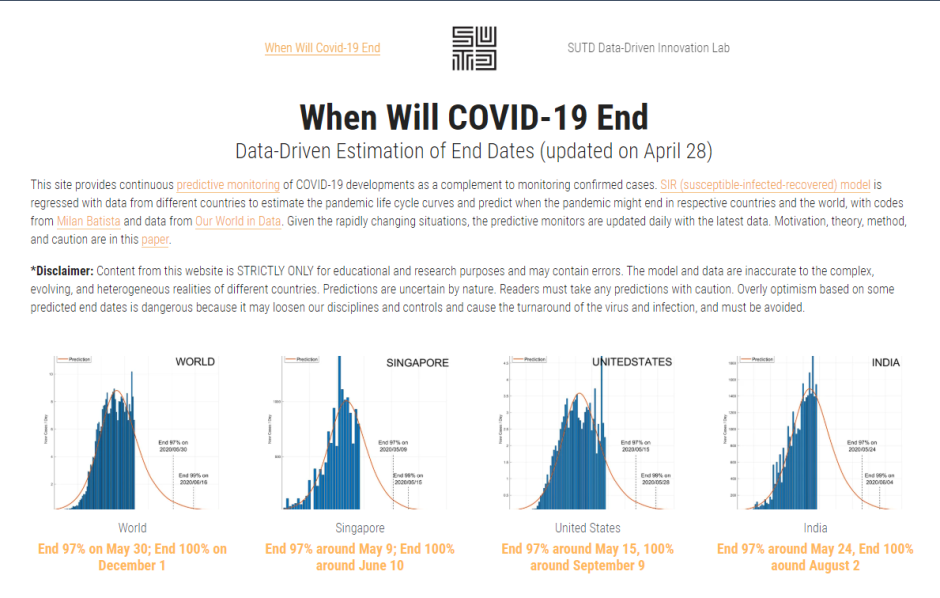Researchers at the Singapore University of Technology and Design have come up with a machine learning based analysis to predict the end of the COVID-19 pandemic in different countries across the world. The researchers, belonging to the Data-Driven Innovation Lab at the university, monitored confirmed cases and fed them into a machine learning model for the spread of disease to come up with their predictions.
The algorithm in question is the SIR (susceptible-infected-recovered) Model developed by David Smith and Lang Moore of Duke University. As its name suggests, the model takes in three key pieces of information about a disease; the number of susceptible individuals, the number of infected individuals, and the number of recovered individuals to plot how the disease will spread in a certain sample population. After this, a few necessary assumptions are made and the data is regressed through mathematical equations to come up with reasonably accurate predictions about the number of cases to be expected in the future.
By repeating this process on data from every country across the globe, they have predicted when each country will be 97%, 99% and 100% coronavirus free. Even better, the team have compiled all of their findings on their website https://ddi.sutd.edu.sg/when-will-covid-19-end in a series of graphs for everyone to see. For example, based on their predictions, citizens of Singapore can expect their country to be rid of COVID-19 sound June 10, 2020. Similarly, the Pakistan is expected to be 97% corona-free by July 16.
Of course, it should go without saying that these are just predictions. They are only as good as the data on which they are based, and their may be cases where the data is not accurate enough to correctly estimate what direction the epidemic takes in the future. Therefore, the website comes with a disclaimer explaining that the findings being displayed are for educational and research purposes only and must be taken with a pinch of salt. Predicting the future of a worldwide pandemic such as the coronavirus is a very difficult task, so the margin of error is quite high. Therefore, readers should continue the necessary precautions like social distancing until we are truly rid of this disease.











